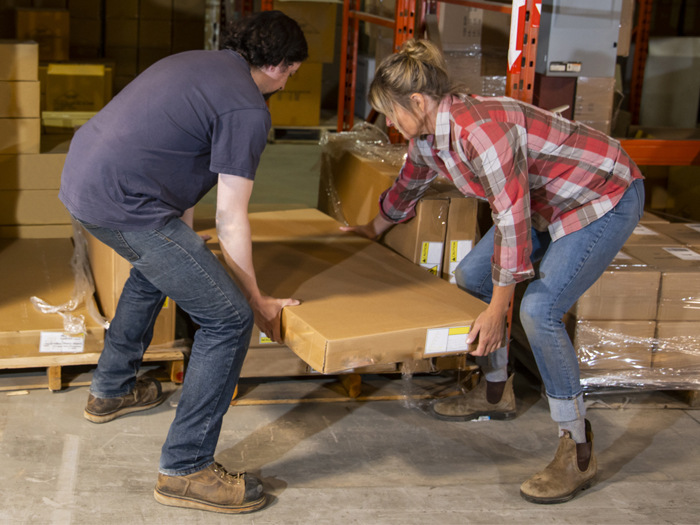Beyond Job Descriptions: How Job Analyses Could Help More Employers Enhance Safety at Work

Job descriptions are changing. As labor shortages and widespread economic challenges require a level of nimbleness from everyone in the workforce, companies today often need their employees to be able to pivot.
The widespread embrace of artificial intelligence across industries is also prompting many teams to rethink how their work is organized, structured and ultimately carried out.
Even with the rapid pace of change in the workplace, most organizations still use job descriptions to give job-seekers and current employees a clear understanding of specific roles’ requirements — but most companies do not have an analysis of the work outlined in those descriptions.
Doing so would support safety goals, but this oversight is probably not due to widespread negligence.
“A great deal of employers do not know the difference between the job description versus the job analysis,” said Verna Jackson, vice president of case management at Broadspire.
And in industries like manufacturing, construction and others where much of the work includes repetitive motions, the absence of details about the work people are hired to do and how that work relates to other functions within the organization could be contributing on-the-job injury trends.
“A lot of companies are actually very good about thinking about return-to-work after an injury happens. But the best time to think about return-to-work is before an injury occurs — actually preventing that injury from occurring,” Jackson said.
The Beauty of Impartiality
So, what are the main differences between the job descriptions human resources and management teams share with prospective employees and the analyses experts like Jackson’s team at Broadspire help employers to compose after visiting their jobsites?
As Jackson’s colleague Nesha Courtney of Broadspire’s Biopsychosocial and Return to Work Services explained, “The difference between a job description and a job analysis is the job analysis actually breaks down the physical components of a job.”

Nesha Courtney, manager of biopsychosocial and return-to-work services, Broadspire
It dissects a job into its components, discussing the frequency of movements and all aspects of a job, Courtney said: “How much are you lifting? To what level are you lifting? What are you standing on? Is it concrete? Is it carpet? Is it an anti-fatigue mat?”
The Society for Human Resource Management (SHRM) also describes job analysis as a process used to determine which activities and responsibilities the role includes as well as its relative importance to other jobs.
While these analyses can be used to compose and refine job descriptions, they also provide a level of impartiality that can help employers get a better grasp on environmental, health and safety experiences at their workplaces.
SHRM notes that an important element of a job analysis is that the job, not the person, is assessed.
“It really is that objective opinion of [a job] — not the worker’s opinion, not the employer’s position. It’s what we actually see happen,” she said, speaking of the on-site evaluations her team provides.
“And the way that helps an employer is manifold,” Courtney added. “One, they can give it to a physician who can look at that and say, ‘OK, based on this, these seem to be the areas where it’s a big issue.’ ”
For example, Courtney added, if a person stands on concrete to do their work each day, and now they have a knee injury, “a simple fix would be giving them a stool, footrest or box to put their foot up on or giving them an anti-fatigue mat, things of that nature.”
Secondly, it provides a certain objectivity to injury recovery situations, she said: “It allows the physician to get an accurate description of what the worker is actually doing.
“After experiencing an injury, a worker could tell a physician, ‘I lift 500 pounds all day long above my head with no help,’ ” Courtney said, referring to common scenarios where an injured person’s explanation of their work may not align with the way the job is intended to be performed.
A job analysis provides physicians with a genuine understanding of the actual job requirements, she said.
Using Ergonomics to Improve Working Conditions
To really get the most out of a job analysis, employers must be able to leverage injury trend data.
When Jackson and Courtney’s team from Broadspire visits their clients’ facilities to initiate the job analysis process, they’ve already been briefed by their analytics and claims teams on the types of injuries workers have sustained over time.

Verna Jackson, vice president of case management, Broadspire
“So we know when we’re going in that this client has a ton of shoulder injuries,” for instance, “and we can zero in on what is happening on site to make those types of injuries occur,” Jackson said.
With this information in mind, Jackson said, her team can tailor recommendations to an employer: “Here’s what you’ve got going on and here’s what you can change or tweak even just a little bit to bring down the number of incidents that you’re seeing.”
“If an employer starts to see a lot of injuries of a particular nature — whether it’s a lot of elbow injuries or neck injuries or soft tissue injuries, whatever it may be — having somebody come in and do an ergonomic evaluation on that station can be very helpful,” Courtney explained.
Working with an ergonomist to revise how specific jobs are performed allows employers to turn negative situations where workers have been injured into something positive that can have rippling benefits throughout the organization.
“It’s great when we do [ergonomic evaluations] for the individual … but it doesn’t help the rest of the staff,” Courtney said. “I have gone in on several occasions with some employers and looked at their actual positions, looked at the jobs themselves to give them recommendations on how to change that specific position to help minimize the impact or the physicality of the job for all their workers in that position.”
Communication Mindfulness
Having an outside team come in to evaluate jobs could put some members of an organization on edge. This is where Courtney said communication mindfulness comes into play.
“If I’m on site and I see a safety hazard, I’m not going to point it out on the floor,” she explained. “I will have a private conversation with the safety officer or the HR person on the site to say, ‘You really want to look at this because even though you’re not getting injuries now, this is a big area of concern.’
“And sometimes, it’s a simple fix,” she noted. “The floor is really slick, so put down some gripping tape, or we’re working with glass and the edges are quite sharp, so take a pool noodle and put it on the edge of that glass.
“We have the opportunity to get really creative,” which can be quite fun for everyone involved, she said.
For both workers and management to collaboratively discover these creative solutions, mutual trust rooted in strong communication is essential.
It’s all about reading the room, Courtney explained. And it’s this framework she uses to help management teams refine how they communicate any changes in safety protocols resulting from the findings of a job analysis.
“And when it comes to working with individuals who are injured or those that I might be working with pre-injury, it’s about the words and the language that we choose,” she said.
“If we always focus on what we/they can’t do, we’re not going to get anywhere,” she added. “So it’s changing our perception … And that’s what I’ll talk to employers about: how we can change the words that you’re choosing to help workers understand what you’re trying to ask, because we all have different experiences.”
Leveraging Technology Requires a Human Touch
As more employers integrate technology like AI-assisted camera vision and wearable devices to target their trainings and measure their safety programs more effectively, rapid changes with technology are also stimulating the fear factor among staff in many workplaces.
Even when technology is brought in to minimize the physicality of a job, as we’ve seen with the growing use of exoskeletons, or to fetch data that is cumbersome for people to collect, employees may start to question the longevity of their positions if they feel their tasks are being scrutinized.
“Somebody [may] see that, ‘Hey, we’re going to be able to do this job a lot better, a lot faster; that means that less of us are going to be needed,” Courtney noted. “So that’s where you really talk about reframing; that’s where management has to figure out how to frame that conversation so that people aren’t terrified of losing their jobs and maybe sabotage what’s happening.”
Even with staff that are open to working with new technology, Courtney said, management teams must communicate to their team how the technology fits into a larger safety picture, and also encourage everyone to have patience, as it may take time to adjust their workflows using the new tech.
“Having management staff come in and say, ‘We understand that it’s going to take you a little bit longer. We understand that you may not hit your quota. We’re going to give you that time to get comfortable and familiar with utilizing this, so we might drop the quota down a little bit during the learning period,’ ” she shared as an example.
“So, it’s people and technology working together to find out what’s going to work best for that individual and that environment.” &










